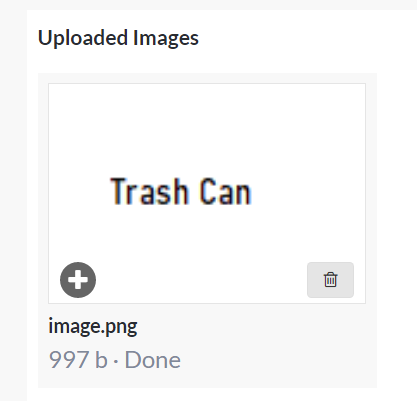-
Posts
6,003 -
Joined
-
Days Won
1
Everything posted by user905133
-
For those who have Mercury-6 and PluginGuru's UNIFY: They have the Unify Patches online (dropbox) for Mercury-6.
-
Since its a 3 day offer, probably best to get the thirty-day demo immediately if interested. For others like me who still use MIDI, please note: Based on a couple of PSP Stomp Boxes I have we can use Automation for VST/VST3 parameters and we can also use MIDI Mapping for hosts that provide midi mapping. (The lack of direct MIDI control might be relevant for those who don't like work-arounds.)
-
From the Cakewalk Reference Guide: "If you want to change the magnetic snap strength, or turn off magnetic snap, adjust the Snap Intensity slider." "Snap Intensity. Specify the magnetic strength when snapping, which determines how quickly moved events are pulled towards the snap grid." "Magnetic Test. Drag the event to test the current Snap Intensity setting." Based on what the Reference Guided says, I think you are right: if the Snap Intensity setting remains where you want it, from what I can tell, it doesn't matter if the test location gets reset or remains where you left it. The Reference Guide seems to agree.
-

Where are Workspaces files saved?
user905133 replied to Andres Medina's topic in Cakewalk by BandLab
The larger issue of making an automatic backup of everything Cakewalk uses is beyond my scope and interest here. I cannot even imagine what Cakewalk would have to do to backup all of the validly registered plug-ins presumably based on the contents of VSTSCAN and other files. As for backing up *.lns files, I did that within the past year to move them from one PC to a newer PC. It was really simple: (1) copy them to a "thumb" drive, (2) copy them to the default location on the newer PC. I did an extra step: (3) move all the older Workspaces to a sub-folder ("Archives"). You can make it more complicated if you want to. -

Where are Workspaces files saved?
user905133 replied to Andres Medina's topic in Cakewalk by BandLab
Why? They are super easy to find if you need to access them. Also, I'm not sure it would be good for users to start messing around with the Workspaces location. If improvements are to be done, to me it would be more important to have a Workspaces file hierarchy (i.e., Workspaces within user-named folders). Of course, if having a Workspaces hierarchy means users can designate an alternate location, that would be a side benefit for those who want to change the default location. Changing the code just to have a user-designated location adds nothing. A file hierarchy (Workspaces within folders) adds something useful for people who use Workspaces on a regular basis. -

Where are Workspaces files saved?
user905133 replied to Andres Medina's topic in Cakewalk by BandLab
I will look. If you have a file list program (like Everything), look for *.lns files [lower case LNS]. Mine are at C:\Users\ {my account name} \AppData\Roaming\Cakewalk\Cakewalk Core\Lenses\User . Hope this helps. Clarification: That's for User Workspaces. For Factory Workspaces, mine are at C:\Users\ {my account name} \AppData\Roaming\Cakewalk\Cakewalk Core\Lenses\Factory . -
Sometimes I still just read the topic or the most recent post or two, but I am much better with checking original posts and the early posts including the dates of the thread. While I agree that in many cases, people should not be "hijacking" threads, in a number of cases, a new post even a year or two later flows directly from the original post, is directly related to the discussion, and is not out-of-place. For that reason I disagree that all threads should be closed/locked after a specified time. Peace.
-
I have used z3ta+ as an FX processor for years. In fact that's the reason I didn't upgrade to z3ta+ 2 when it came out. I haven't used it in about 1-2 years, but it worked well for me with Windows 10. The last project I used it with, I used a Korg NanoKontrol to modify FX parameters in real time. This describes the process. Not 100% sure, but there might be another article, too. UPDATE: This might be the other article I was remembering:
-
I don't use this at all (except for a test once or twice a few years ago), but I thought the Snap Intensity setting changed in real time and the test strip was just a place where we can test the snap settings.
-
Interesting synth. Some cool sounds. Will probably be an instant collector's item for fans of the Jupiter-6 and CA soft synth collectors. As for me, I have been getting into a couple of the new synths added to CA's Synth Stack and am not sure this one will be as useful to me. If they come out with more synths in the Mercury line and have a massive collection of Mercury modules for use in Voltage Modules, that might be a better fit for me.
-

Metronome sounds terrible when playing Solo
user905133 replied to Miquel Cañizares's topic in Cakewalk by BandLab
My default Cakewalk metronome pings (Low and Hi) are 705kbps (according to the file properties) and sound just fine for what they are intended to do. However, I often will use a basic drum track especially as I start building up tracks. Did you check to see if your metronome files got corrupted? I don't use it regularly, but MeldaProduction's set of free plugins includes MMetronome. Maybe that will better meet your needs. -
I looked at the manual and at the Expansion Manager software guide. If the Expansion Manager software will generate a text file for the presets in the expansion pack you have, you could cut and paste that into the *.ins file for the psr s670, If the Expansion Manager software doesn't export a list of the preset names, you might have to type them in yourself. Unfortunately, I couldn't find anything in the guide that mentioned generating a list of the preset names. I did see in the update list that evidently you can change the LSB for your own banks. That would be useful information for editing the psr s670 instrument definition file to include names of the user presets. I am not sure of how Yamahas do bank switching, but I'd guess that where the instrument definition says Bank n, n = the LSB. Unfortunately, I have not been able figure out what the MSB should be for the expansion pack presets. Maybe you can figure that out by tweaking a preset and looking in the psr s670 to see where it is. I will be happy to defer to others who are familiar with Yamahas. Hope this helps.
-
Correct me if I am wrong, but it sounds like you already have an instrument definition for the psr s670 and you just want to edit it to include the names of presets from an expansion. In different gear from a different manufacturer I used to edit my own *.ins files to include different banks of sounds. This involved using notepad to type the names in and making sure I have the right LSB and MSB for the bank switching assignments. For my gear, user presets were always loaded into memory which was bank 0. Each expansion sound ROM had its own bank switching address. Either the user manual for the psr s670 or the MIDI manual should tell you what bank switching method it uses.
-
I also got the 404 error. It looks like they have some resources for prospective students: https://online.berklee.edu/free-music-course-resources (account needed) as well as some other promotional and informative resources that are available without an account: https://online.berklee.edu/takenote/podcast/music-is-my-life/.
-

Plugin Boutique's March Freebie - CUBE Mini + Rumble Expansion
user905133 replied to Wibbles's topic in Deals
I don't think Plugin Boutique has the Miniverse Module Collection for Voltage Modular (I didn't see it there), but the $19.50 price at Cherry Audio is for owners of the Cherry Audio Miniverse Instrument. -

Track view messed up and not visible
user905133 replied to RICHARD HUTCHINS's topic in Cakewalk by BandLab
Yup. They are hidden for some reason; possibly because the track view is scrolled down so tracks 1-9 are above what's visible. -

Track view messed up and not visible
user905133 replied to RICHARD HUTCHINS's topic in Cakewalk by BandLab
Something looks odd. It looks to me like you have a track there (track 10). Are you saying there are other tracks that have become hidden? -
I click edit for the initial post. That way the topic becomes editable. Not sure if that's in the Official Forum Poster's Manual, but I just double checked and it worked.
-
Interesting: I looked up "panic" in the Reference Guide (Ctrl+F) and found several sections about the Improved Reset/Panic Feature, but its not listed in the Table of Contents or the Index for the Online Documentation. Its there, just not listed in the Table of Contents or the Index. So, for somethings, its better to search in the Reference Guide.
-
As for uploaded images/attachments, you can delete them when you edit the text of your post. There's a trash can in the bottom section of the editor.
-

Plugin Boutique's March Freebie - CUBE Mini + Rumble Expansion
user905133 replied to Wibbles's topic in Deals
Good question. I hope someone who has the Mini version can test that and report back. -

BandLab online editor lags when i place down notes.
user905133 replied to EliTheFox's topic in General Music Discussion
Maybe try Bandlab? https://help.bandlab.com/hc/en-us/articles/4404926548121-How-do-I-contact-BandLab-





